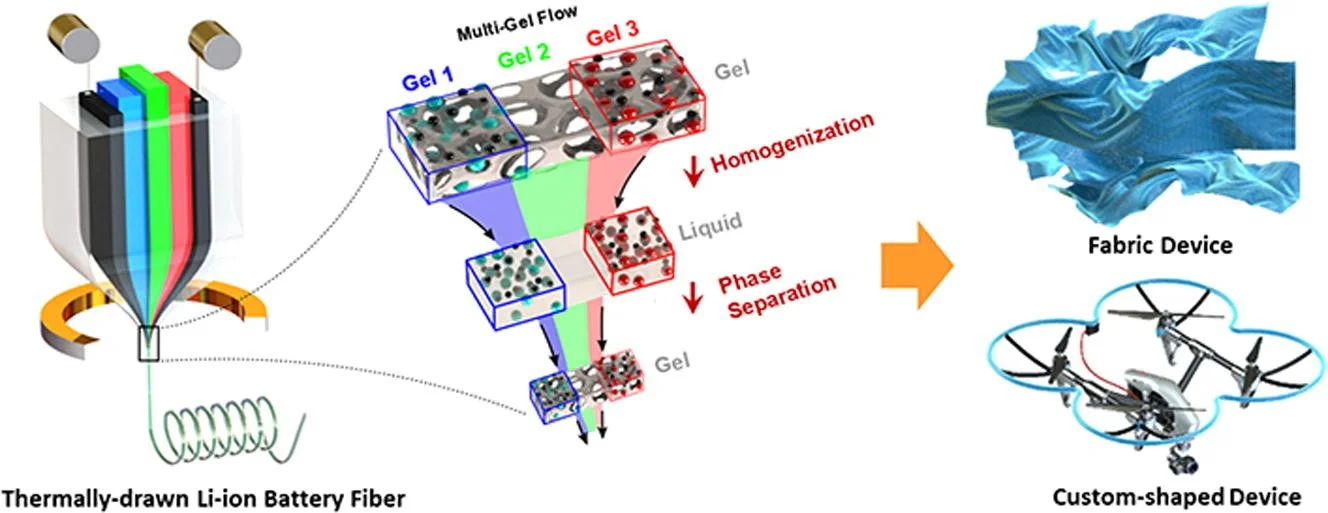Thermally drawn rechargeable battery fiber enables pervasive power
Science Direct
The increasing demand for mobile computing, communications, and robotics presents a growing need for suitable portable power solutions in non-flat customized electronic devices. Fibers as fundamental building blocks of fabrics and 3D-printed objects provide unique opportunities for developing pervasive multidimensional power systems. The characteristic small diameter (<10−3 m) and high aspect ratios (>106) of fibers and expansion of fibers into 2D and 3D power systems necessitate ultra-long lengths to meet the energy specifications of portable electronic systems. Here, we present a Li-ion battery fiber, fabricated for the first time using a thermal drawing method which occurs with simultaneous flows of multiple complex electroactive gels, particles, and polymers within protective flexible cladding. This top-down approach allows for the production of fully-functional and arbitrarily long lithium-ion fiber batteries. The continuous 140 m fiber battery demonstrates a discharge capacity of ∼123 mAh and discharge energy of ∼217 mWh. The scalability and material tunability of these fibers position them for use in varied non-planar electronic systems, including a 1D-flexible electronic fiber, a 2D-large-scale machine woven electronic fabric (∼1.6 m2), and a 3D-printed structural electronic system. The fiber battery satisfies the requirements of portable electronics systems as it is machine washable, flexible, usable underwater, and fire/rupture-safe. We have demonstrated the powering of a submarine drone, LiFi fabric, and flying drone communication through different rechargeable fiber battery schemes, which paves the way for the emergence of the pervasive battery-powered electronics.

